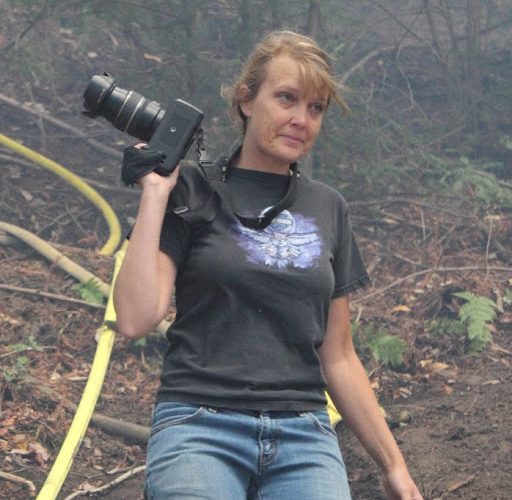By Chris Finnie
This year voters have a choice between six candidates for the San Lorenzo Valley Water District board. Because one group of candidates has chosen to campaign as a slate and encourages voters to vote for all three as a group, I’m going to treat all six as two slates: The Challengers and The Incumbents.
The Incumbents include two board members that were elected in 2014: Chuck Baughman and Gene Ratcliffe, and a recently appointed member who previously served as a citizen volunteer on the Budget and Finance committee, John Hayes.
The Challengers feature Steve Swan, who ran for the board unsuccessfully in 2012; Bob Fultz, who also ran unsuccessfully in 2012 and served as a citizen volunteer on the Administration committee; and Lois Henry, who served on the Lompico County Water District.
If the Challengers slate wins, they would join Bill Smallman, who also served on the Lompico board with Henry from 2008 until their merger with San Lorenzo. Because of this, I thought it germane to examine the differences in the way the two boards handled surprisingly similar challenges of drought, revenue shortfalls, and aging infrastructure inherited from previous boards.
Lompico
When Smallman and Henry were elected in 2008, the Lompico County Water District (LCWD) had the highest rates in the county, which rose to $175.00 per customer, every two months during their tenure—even though, as supervisor McPherson noted in a 2016 Press Banner editorial, “The residents of Lompico have the lowest water usage in the county.” Despite this, they couldn’t keep up with the equipment failures, from leaking tanks and pipes to failed well pumps. Pete Norton, chair of the Lompico Water District Citizen Advisory Committee, told the Good Times in 2015, “Some of the things are a little scary. They have a crew running up and down a hill multiple times a day to turn pumps on and off manually. They have people going up to the top of certain tanks and pouring liquid chlorine into the hatch. Things like that that are just funky.”
The article goes on to note, because Lompico’s water system was in such poor condition, the California Department of Public Health mandated that the infrastructure be repaired for safety reasons. The Los Angeles Times reported the same year that, “Bills are written out every two months and volunteers stuff envelopes at mailing parties. Chlorine levels are checked by hand and well pressure is calculated by a 21-year-old who got the job responding to a newspaper ad.”
Billing was the tip of their administrative woes. They fired their district manager in 2010 and he was then charged with five felony and four misdemeanor counts for his actions as manager. The same year, the district secretary was fired and arrested on felony charges of embezzlement. Numerous local news reports say LCWD board meetings were often filled with snide remarks and intense arguments—with sheriff’s deputies sometimes called in to restore order. The 2011-2012 Santa Cruz County Grand Jury Report catalogued a financial horror story:
- “LCWD’s financial structure was in worse shape than its physical water system. Five years of deficit spending put LCWD on the verge of bankruptcy.”
- “In 2009, at the request of the LCWD Board of Directors, the County Auditor-Controller’s office took over paying the district bills and payroll.”
LCWD was fined for repeatedly missing deadlines for the “Annual Report of Financial Transactions” required to be filed with the State Controller within 90 days after the end of each fiscal year. They also failed to pay in to the state pension plan and faced a huge fine for that. - “LCWD remains in serious debt to creditors, including fines owed the State of California and bills owed creditors like PG & E, which has threatened to shut off the district’s electrical power.”
- “LCWD currently is on a cash-on-delivery basis with suppliers. In March 2010, the district could not pay for the chemicals needed for the filtration system and had to appeal to the County of Santa Cruz to cover the bill.”
- “Neither the board of directors nor management fulfilled their fiscal responsibilities to create and maintain a budget to meet the financial and infrastructural needs of the water district. No capital improvement plan was found.”
Lois Henry has said in public appearances that she was only on the board for six months when this report was issued. Perhaps that’s true of the 2008-2009 report. But the report quoted here came out in 2011—two years after she was seated for the first of two terms. Clearly the issues had not been addressed. And communications had not improved. In 2011, Santa Cruz.com said, “With bickering, flying insults, and passive aggressive comments, the Lompico water board’s monthly meetings are some of Santa Cruz County’s best live theater.” Bill Smallman has continued this during his tenure on the San Lorenzo Valley board, as has Lois Henry as a member of the public attending board meetings.
Bob Fultz was also noted for his uncooperative and condescending attitude by other board members who served with him as trustees on the San Lorenzo Valley Unified School District. During two and a half years on the SLVWD Administration committee, they accomplished one thing: Vetting new attorneys for the district. Fultz was the only person to vote for a different candidate than the rest of the committee.
San Lorenzo Valley
The San Lorenzo Valley Water District (SLVWD) had their own problems with leaking tanks and mains, declining reserve funds, and more improvements than revenue would cover. As assemblyman Mark Stone noted in an interview with the Santa Cruz Mountain Bulletin, “Rate increases will always be a controversial decision. But a board has to look at what their infrastructure cost is, and how they meet their obligations to provide water. Under public pressure, boards like this often don’t raise the rates. Those are difficult decisions. A responsible board will do what’s best for the community. And that’s ensuring the long-term viability of an asset that’s as important to us as water.” However, as he noted, this board did what they needed to do to meet those obligations. “This current board has had to make some difficult decisions. But they’ve been very strong stewards of the environment, very strong stewards of their obligation to their ratepayers. I think they’ve made a lot of very good decisions and have been effective board members.”
The 2015-2016 Grand Jury report was fairly damming for the SLVWD too. This board responded by doing a Capital Improvement Plan, a rate study, and a rate increase. They involved the public openly in all processes and published all the plans on their website. After the rate increase went through, they immediately started working on the capital improvements. At press time, they’ve already started over $10 million in improvements. Though the Challengers have characterized their re-election as “business as usual,” their performance has been far from business as usual so far. The 2017-2018 Grand Jury report reflects the progress. The only critique in that report was about communication with the Lompico part of the district.
Another issue that the Challengers have highlighted is the use of glyphosate
in watershed land. Because Mark Stone was a leader in stopping its use in the county, I asked him about that, too. He replied, “Applying it physically is the only way to do it without contaminating the habitat and watershed. Disturbing the habitat of an endangered species would be a taking under the Endangered Species act. So, what they were proposing was probably the only way to get rid of the invasive plants without impacting anything else.”
When asked for his overall impression of the Incumbent slate, Stone replied, “Working on these special districts that are very close to your constituents, and making decisions that affect people on a day-to-day basis, is very difficult to do. I measure the quality of a board by how effective they are at facing the difficult decisions. It’s our job to rise above individual perspectives and look at the greater good. That’s why I have confidence in the board of the SLVWD. They’ve made good decisions.” He added that they’re particularly strong on what he considers a key issue for regional water matters. “Now, as a member of a more regionally based agency, they’re trying to be a partner with other agencies in providing some balance in how the Santa Margarita aquifer and groundwater basin is being managed.” (The Santa Margarita Groundwater Basin is a primary source of water supply for Scotts Valley, San Lorenzo Valley, and Santa Cruz. It covers over 30 square miles in the Santa Cruz Mountains foothill forming a triangular area that extends from Scotts Valley to the east, Boulder Creek to the northwest and Felton to the southwest.)
I Endorse the Incumbents
I agree with assemblyman Stone. The Incumbents have done a good job. They deserve another term to complete the important work they’ve started.




















